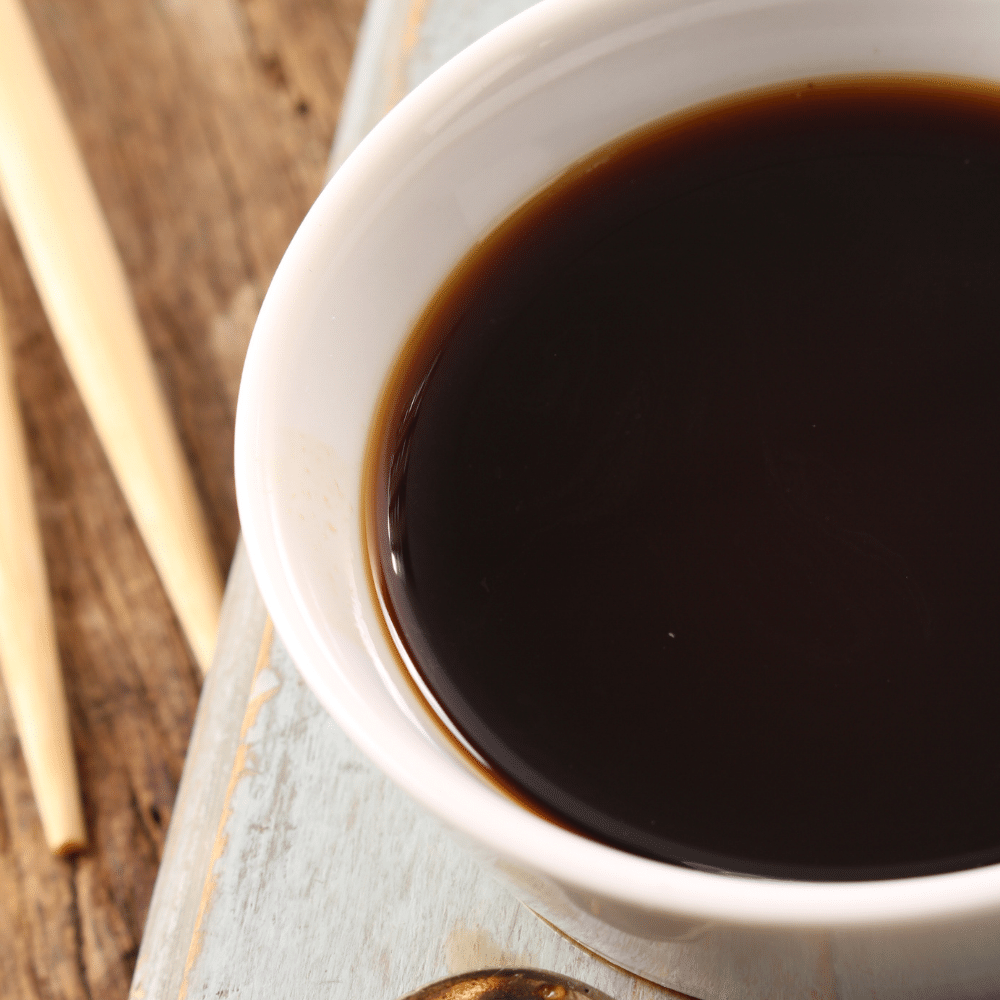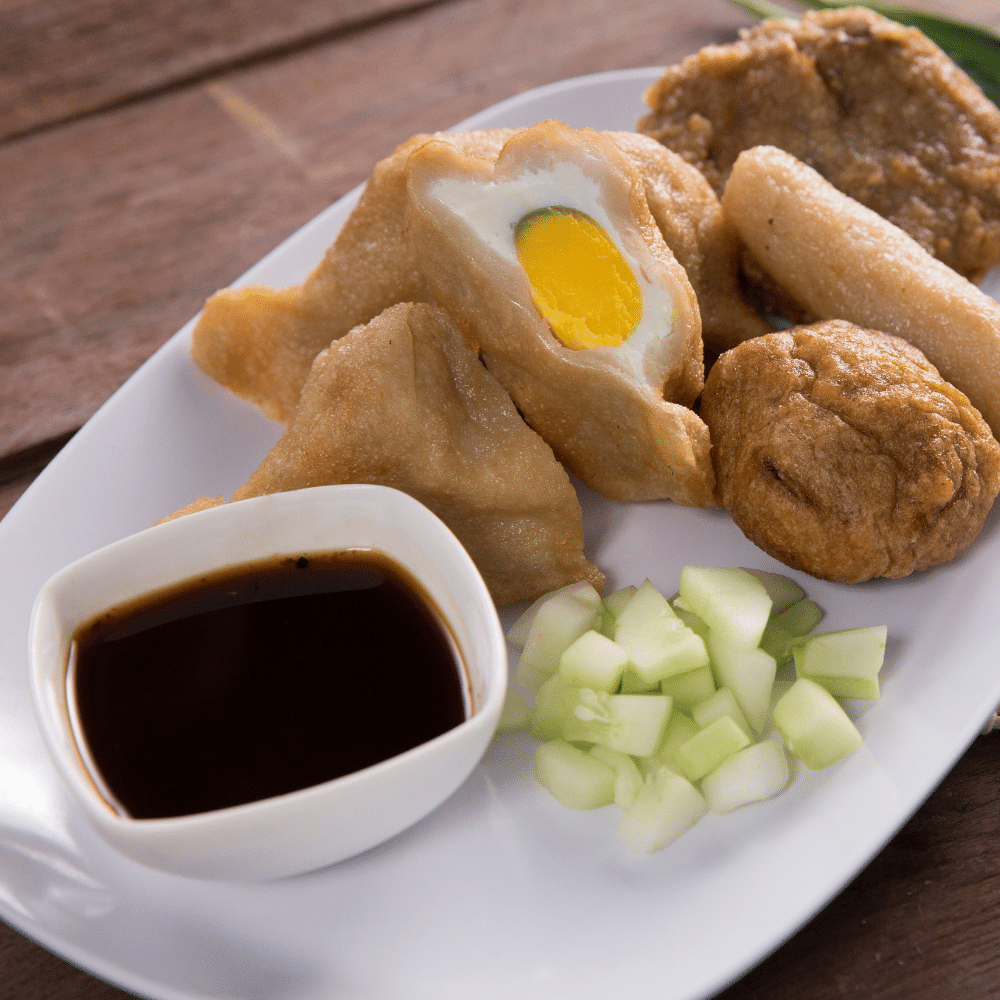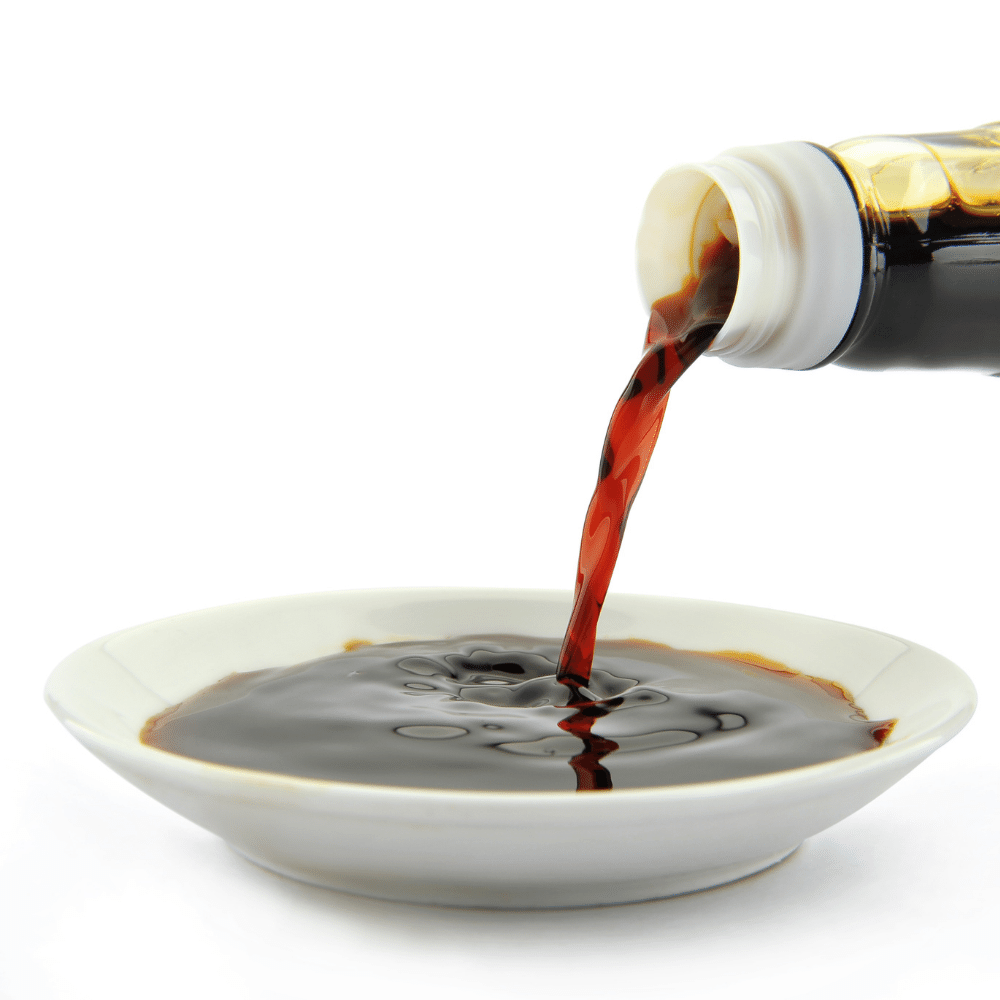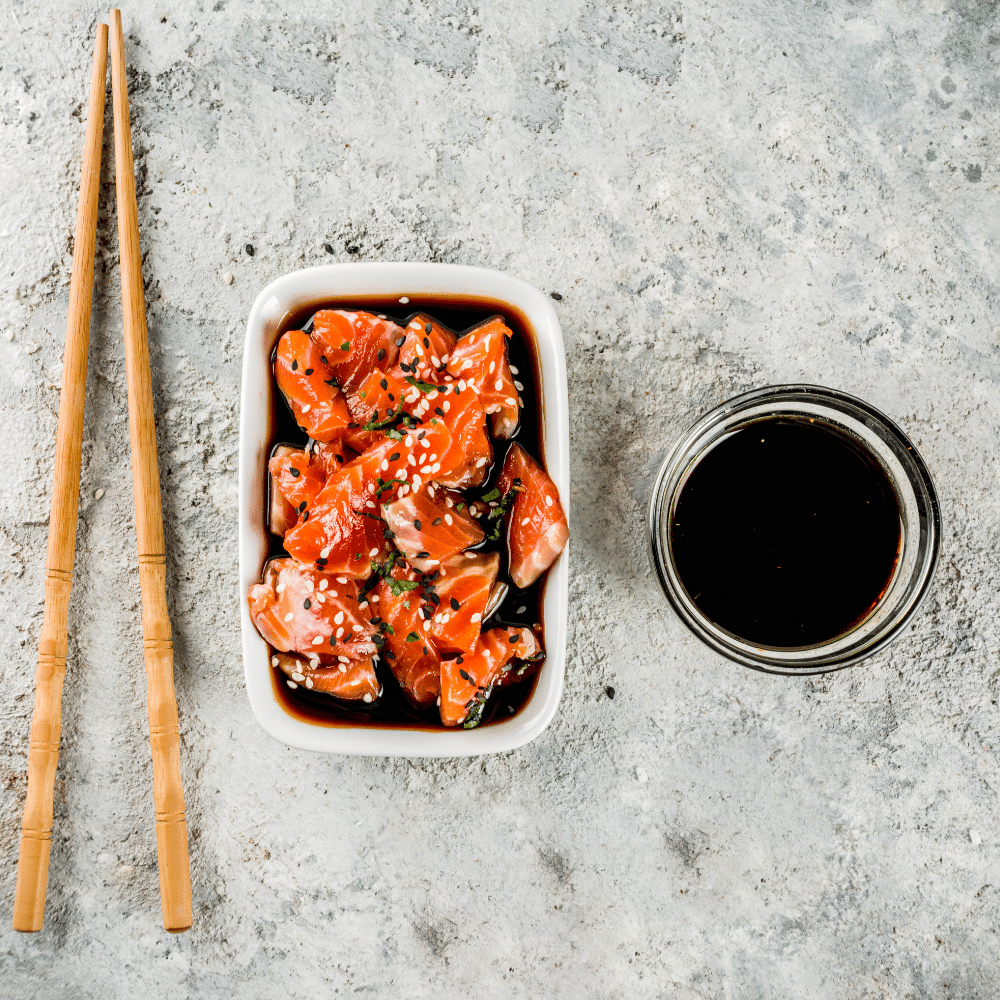Soy sauce is a staple of Korean cuisine, and it’s essential to have on hand if you’re planning on making Korean food.
It’s what gives that distinct umami taste to so many sauces, marinades, and stir-fries.
But what do you do if you can’t find soy sauce at your local grocery store?
Or if you have an allergy to soy?
Read Also: What Spices Go with Soy Sauce? (13 Best Spices)

Well, in this post, we’ll dive deep into the world of Korean soy sauce substitutes.
But first, what’s the best Korean soy sauce substitute?
The best substitute for Korean soy sauce will be Japanese soy sauce.
Korean and Japanese soy sauces are very similar in flavor and texture, but Korean soy sauce tends to have a bit more spice. However, the difference is so subtle that you won’t notice it when you’re cooking.
That’s why I recommend using Japanese soy sauce instead of Korean soy sauce; it will bring out the natural flavors of your dish without altering them too much.
8 Korean Soy Sauce Substitutes
Korean soy sauce, also known as ganjang, is a rich, sweet, citrus-y soy sauce that has become popular in recent years.
But what do you do when you want to make your favorite Korean recipe and discover you’re all out of ganjang?
Below, I’ll go over some suggestions for substitutes that have similar flavor profiles:
1. Japanese soy sauce

Japanese soy sauce is a perfect substitute for Korean soy sauce thanks to its similar composition.
Both sauces are made from fermented soybeans, and both contain roughly the same amount of salt.
The main difference between Japanese and Korean soy sauce is their origin: while the former is made in Japan, the latter is made in Korea—and that’s it!
The best way to incorporate Japanese soy sauce into your meal is by using it as a dipping sauce when eating ddukbokki (spicy rice cakes) or gimbap (seaweed rice rolls).
If you’re making chicken soup with ginseng, toss in some Japanese soy sauce instead of Korean, too.
You won’t regret it!
2. Japanese Teriyaki Sauce

If you’re looking for Korean soy sauce substitutes, look no further than Japanese Teriyaki Sauce.
These sauces share a lot of common flavorings and ingredients, but there are subtle differences that make each sauce distinct.
First, both are made with soy sauce, sake, mirin, and ginger.
In Teriyaki Sauce, the soy is subtly sweeter and less salty than its Korean counterpart.
Both sauces also have a hint of garlic—but in the Korean version, the garlic is more front-and-center than it is in the teriyaki sauce.
You can use teriyaki sauce as an easy substitute for soy sauce when cooking up some delicious Korean chicken.
Simply swap out the soy sauce for teriyaki sauce after frying the chicken to your liking.
3. Asian Fish Sauce

Asian fish sauce is salty and has a strong flavor that works just as well as Korean soy sauce!
When you’re making a meal, it’s important to think about how the substitute is similar to the original.
In this case, they both have saltiness and umami taste.
This means that you can use them interchangeably in recipes, with one or two adjustments.
If you’re cooking something like soup or stew, where the meal is cooked for a long time, asian fish sauce will work just as well as Korean soy sauce.
But if you’re making something quick, like stir-fry or rice, you’ll want to use less of the fish sauce than the recipe calls for so it doesn’t get too salty!
4. Dark Soy Sauce

Dark soy sauces are a great substitute for Korean soy sauces.
They’re thicker than other varieties, but they have the same flavor profile, which makes them a good substitute.
Another good thing about dark soy sauce is that, because it’s thicker than regular soy sauce, you won’t need to use as much of it to get the same salty kick.
5. Coconut Aminos

Soy sauce and coconut aminos have a lot in common—they’re both fermented, salty, and black.
But there are also some key differences to keep in mind when you’re deciding whether or not to substitute one for the other in your Korean meal!
First, the similarities:
- Both are fermented.
- Both have a saltiness that can be used for seasoning protein, vegetables, and starchy foods.
- Both are black.
Now let’s look at how they differ:
- Soy sauce is made with soybeans and water.
- Coconut aminos are made with coconut sap and sea salt.
- Soy sauce has a smooth texture while coconut aminos are more syrup-like.
6. Worcestershire Sauce

Like Korean soy sauce, Worcestershire Sauce is a fermented condiment that uses fish and soy as its base.
The main difference is that it’s sweeter than Korean soy sauce, so it’s going to change the flavor profile of your dish, but it will still work as a great substitute if you are out of Korean soy sauce.
You can use Worcestershire Sauce as a substitute in just about any recipe that calls for Korean soy sauce.
Just note that because Worcestershire Sauce is sweeter, this will affect the flavor of your dish.
To balance out the extra sweetness, consider adding an extra pinch of salt or a splash of vinegar to help balance things out.
7. Mushroom Soy Sauce

While both Korean soy sauce and mushroom soy sauce are similar in their saltiness and thickness, they are different in taste due to mushrooms added to the mixture during fermentation process of Chinese mushroom soy sauce instead of Korean soy sauce which uses only salt and water for the fermentation process.
Don’t worry though, there’s a very easy way to use this substitute: simply use it at a 1:1 ratio in your recipe!
And if you’re looking to add some umami flavor to your dish, don’t be afraid to double up on the amount of mushroom soy sauce you use.
8. Tamari

Tamari is made from fermented soybeans and is pretty similar to Korean soy sauce, but it doesn’t have the wheat that some soy sauces have added.
It still has that nutty taste that makes Korean soy sauce so unique, and it’s a really easy way to make sure your dish isn’t gluten-free anymore.
Plus, if you’re making stir fry with your Korean soy sauce substitute, it’s almost as good as the real thing!

8 Substitutes for Korean Soy Sauce
Ingredients
- Japanese soy sauce
- Japanese Teriyaki Sauce
- Asian Fish Sauce
- Dark Soy Sauce
- Coconut Aminos
- Worcestershire Sauce
- Mushroom Soy Sauce
- Tamari
Instructions
- Pick any of the alternatives on this list.
- Prepare the rest of your meal.
- Be ready to munch in no time!
Hi, I'm Benjamin. I love cooking, long walks, and my girlfriend! Here you’ll find simple and delicious recipes that you can make in 30 minutes or less.

